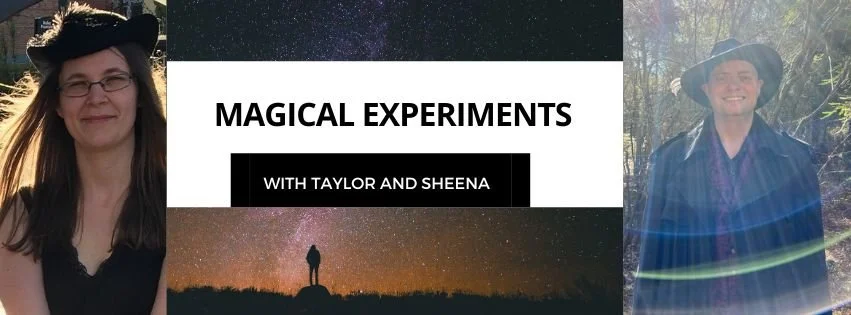 There's a lot of conversation going on right now about the validity of pop culture magic and spirituality in the blogosphere. If you want to see my response to it, go here. But I figure for this post I'll talk about some of my current work with pop culture magic. While my magical practice isn't as focused on pop culture anymore, it's still a significant component of how I practice magic. I'm pleased that more and more people are integrating pop culture into magic, as it is necessary for the evolution of magic. So below are a few case studies of what I've been up to.
There's a lot of conversation going on right now about the validity of pop culture magic and spirituality in the blogosphere. If you want to see my response to it, go here. But I figure for this post I'll talk about some of my current work with pop culture magic. While my magical practice isn't as focused on pop culture anymore, it's still a significant component of how I practice magic. I'm pleased that more and more people are integrating pop culture into magic, as it is necessary for the evolution of magic. So below are a few case studies of what I've been up to.
Nathan Drake: Discoverer of lost items
At the beginning of this year I discovered the Uncharted video game series. While the first game was a bit lackluster in my opinion, the second and third game are amazing. You feel like you're in a movie. Even the musical score supports this feeling. In playing the game I felt like I got to make a connection with the main character and there were three traits I felt were useful: His ability to find artifacts that were lost (you collect them throughout the game), his problem solving abilities, and his luck. So I figured if I ever needed to I could call on his help for finding something I've lost. I've had three occasions where I've needed his help. Once was to find my phone (I'd left it in a restaurant) and the other two times were to find keys. Now I imagine that all of you know how frustrating it is to lose something and not be able to find it, especially when you need it. In each case, I started humming the theme song of Uncharted to evoke Nathan. Then I asked him to find the objects in question and show me a map of how to find them. Each time I did this, within a couple minutes I got a map that showed me where to go and each time I found the item in question.
I figure if I'm stumped about a problem I can also call on Nathan to help me discover possibilities for solving the problem. I haven't had to as of yet, but I'm sure I'll need to. And he's lucky...he's fighting scores of goons and who know's what else and he always comes out on top, so that's something else I figure I can draw on.
Kratos: Time and Time Again
If you're familiar with the God of War series then you know of Kratos. What's fascinating about Kratos isn't just the fact that he's the archetype of rage and vengeance (as well as the God of War), but the fact that in most of the games time is an element that he uses to his advantage. The most recent game, for example, allows the character to construct or deconstruct items, while in other games he is able to slow down time. Pretty nifty skills. While I already have some Time Dilation techniques I can use, I'm never one not to experiment or explore an idea that's presented in a different way. So in the case of Kratos its involved actually calling on him to slow or speed time up for me, which has been useful for reaching several business appointments. I could do it myself, but the point was to see what he could do. When he does it, he projects a cone of greenish energy that is used to either speed up or slow down time. It's projected into the environment, but doesn't effect me. And as with Nathan I hummed the theme music to evoke Kratos.
Those are examples of working with pop culture entities and I used them to show how such entities can be used to effect events as opposed to just personality traits. But I'd be remiss in not including a practical pop culture oriented technique that the magician could do him/herself.
Sharing Images
Something I've noticed with blogs is that if you include a picture its more likely to grab the attention of people and get them to go and read your blog. There's nothing inherently magical in that, but it's occurred to me that one way you can charge sigils is to simply share a picture of the sigil on social media. You can even embed the sigil into a picture if you'e got the right skills and then people can charge it up for you. Each sharing of the sigil fires it off while also charging it with the attention of the people who look at it, like it and comment on it.
So those are a few pop culture magic workings I've been working on. There's a few I haven't shared either and those will have to wait until I write the next Pop Culture Magic book. There's a lot to explore with pop culture magic if you have an open mind.

